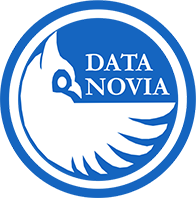Introduction
Programming paradigms represent the fundamental approaches and styles used to solve problems with code. They provide a framework for structuring programs and influence everything from how you think about problems to the tools you use to implement solutions. In this guide, we explore the three main paradigms—procedural, object-oriented, and functional programming—discussing their principles, advantages, and practical applications.
What Are Programming Paradigms?
A programming paradigm is essentially a model or style of programming that determines how developers structure and write their code. The choice of paradigm affects not only the syntax and structure of your programs but also how you approach problem-solving and software design.
Procedural Programming
Procedural programming is one of the oldest paradigms. It is based on the concept of procedure calls, where code is organized into functions or procedures.
- Key Characteristics:
- Sequential Execution: Code is executed in a linear sequence.
- Modularization: Functions are used to divide code into reusable blocks.
- State Management: Data is typically manipulated through variables that change state over time.
- Advantages:
- Simple and intuitive, especially for small projects.
- Easier to understand for beginners.
- Direct mapping to the underlying computer architecture.
- Example Languages: C, Pascal, and early versions of BASIC.
Object-Oriented Programming (OOP)
Object-oriented programming revolves around the concept of ‘objects’, which encapsulate data and behavior. OOP emphasizes modularity and reusability by modeling real-world entities as objects.
- Key Characteristics:
- Encapsulation: Bundling data with the methods that operate on that data.
- Inheritance: Creating new classes that inherit properties and behaviors from existing classes.
- Polymorphism: Allowing objects of different types to be treated as objects of a common superclass.
- Advantages:
- Improved code organization and reusability.
- Easier maintenance and scalability for large projects.
- Better alignment with real-world modeling.
- Example Languages: Java, C++, Python (supports OOP), and Ruby.
Functional Programming
Functional programming is a paradigm where computation is treated as the evaluation of mathematical functions. It avoids changing-state and mutable data, emphasizing immutability and the use of higher-order functions.
- Key Characteristics:
- Pure Functions: Functions that produce the same output for the same input without side effects.
- Immutability: Data is not modified after creation.
- Higher-Order Functions: Functions that can take other functions as arguments or return them as results.
- Advantages:
- Easier reasoning about code behavior.
- Reduced likelihood of bugs due to immutable state.
- Facilitates parallel and concurrent programming.
- Example Languages: Haskell, Scala, and Clojure; many modern languages like Python and JavaScript also support functional programming features.
Comparison and Use Cases
Each programming paradigm has its own strengths and is suitable for different types of problems:
- Procedural Programming is excellent for simple, linear tasks and small programs.
- Object-Oriented Programming shines in large-scale applications where modeling complex interactions is necessary.
- Functional Programming is ideal for tasks that require concurrent processing and predictable, side-effect-free code.
Understanding these paradigms allows you to choose the right approach for your project and can even help you combine paradigms for more effective problem-solving.
Conclusion
Programming paradigms are more than just theoretical concepts—they shape how we write code and solve problems. By familiarizing yourself with procedural, object-oriented, and functional programming, you’ll be better equipped to select the best approach for your projects and adapt to the evolving landscape of software development.
Further Reading
- What is Programming? A Comprehensive Introduction
- Essential Programming Concepts Every Beginner Should Know
- Common Challenges in Learning Programming (and How to Overcome Them)
Happy coding, and enjoy exploring the diverse world of programming paradigms!
Explore More Articles
Here are more articles from the same category to help you dive deeper into the topic.
Reuse
Citation
@online{kassambara2024,
author = {Kassambara, Alboukadel},
title = {Understanding {Programming} {Paradigms:} {Procedural,} {OOP,}
and {Functional}},
date = {2024-02-01},
url = {https://www.datanovia.com/learn/programming/introduction/programming-paradigms.html},
langid = {en}
}
